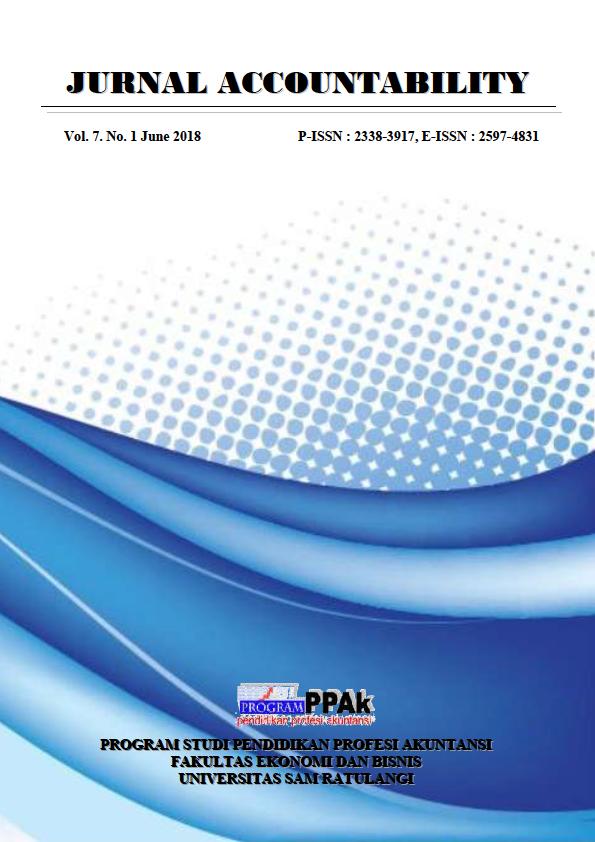ANALYSIS OF INTERNAL CONTROL OF FIXED ASSETS IN PT. LUMBUNG BERKAT INDONESIA
Abstract
The presence of an internal control system of fixed assets that will assist management in supervising, monitors costs incurred when fixed assets are acquired until property, plant, and equipment are released. Adding or extending the useful life of fixed assets and assisting in increasing the operational contribution and productive capacity of the company's fixed assets maintain security, check the accuracy and correctness of data from the company's fixed assets. This study aims to determine the implementation of the structure of Internal Controls of Fixed Assets conducted in PT Lumbung Berkat Indonesia which is a type of construction company. The analysis method used is descriptive method. Data type is qualitative data with secondary data source. The result of the research shows that internal control in PT Lumbung Berkat Indonesia has not been effective yet. This is seen from the lack of separation of duties and responsibilities between the finance and accounting departments, the absence of an audit committee, never conducting tests and measurements on fixed assets. Any decision relating to fixed assets shall first be authorized by the President Director, but the company never conducts physical property checks and matching with fixed assets records. There is also no expenditure on capital and revenues. Depreciation method used is straight line depreciation and implemented continuously every year. However, the list of fixed assets of the company has not been up to date since the company only attaches fixed assets in the form of buildings and vehicles in the project (excluding vehicles and inventory in the office).
Keywords: Internal Control, Fixed Assets.
Downloads
Published
Issue
Section
License
The articles published in Jurnal Accountability are licensed under Creative Commons Attribution-NonCommercial 4.0 International with authors as copyright holders.
Â

This work is licensed under a Creative Commons Attribution-NonCommercial 4.0 International License.
Â
- Share — copy and redistribute the material in any medium or format.
- Adapt — remix, transform, and build upon the material.
- The licensor cannot revoke these freedoms as long as you follow the license terms.
- Attribution — You must give appropriate credit, provide a link to the license, and indicate if changes were made. You may do so in any reasonable manner, but not in any way that suggests the licensor endorses you or your use.
- NonCommercial — You may not use the material for commercial purposes.
- No additional restrictions — You may not apply legal terms or technological measures that legally restrict others from doing anything the license permits.
- You do not have to comply with the license for elements of the material in the public domain or where your use is permitted by an applicable exception or limitation.
- No warranties are given. The license may not give you all of the permissions necessary for your intended use. For example, other rights such as publicity, privacy, or moral rights may limit how you use the material.


